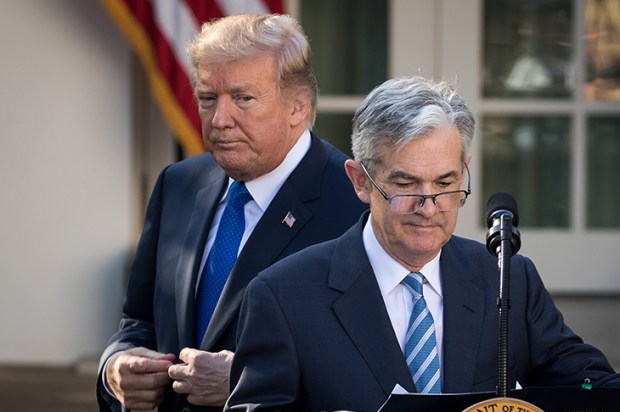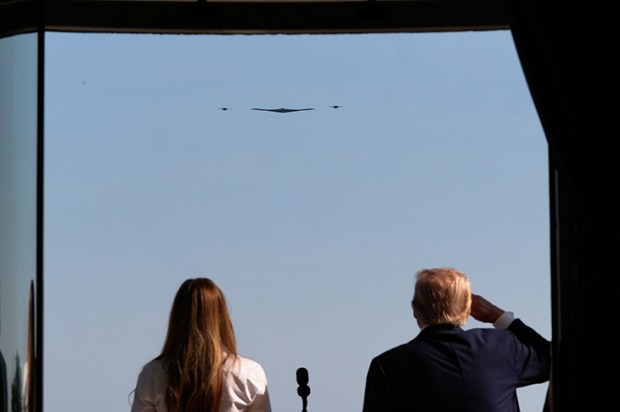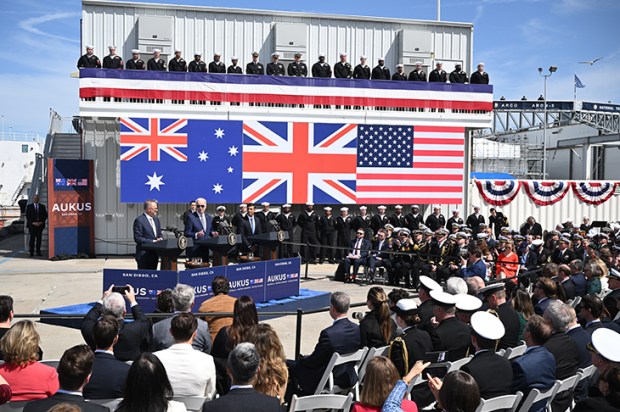It has become an internet meme to misquote the character Syndrome from the movie The Incredibles: ‘If everything is racist, then nothing is.’ This mocks the obsession of our modern elites with race and how they label almost anything as racist.
Everything from punctuality, hard work, maths, even working out at the gym has been labelled as racist. But just as printing money devalues the currency and causes inflation (a phenomenon we are also currently suffering through) the overuse of the race card has devalued its relevance.
So, just as a devalued currency is replaced with new coinage, our elites have come up with a new catch-all word that can be wielded as a weapon against anything they don’t like: ‘misinformation’.
And this was on full display in the United States, and here in Australia, in response to the attempted assassination of former president Donald Trump.
This incident seemed to be the toxic fruit of years of demonisation of the ‘far right’, hyperbolic warnings about the rise of fascism, and dehumanising language about Trump himself as an existential threat to democracy. Yet the response of Australia’s Prime Minister Anthony Albanese was to play the misinformation card.
‘I urge Australians to exercise caution when reading unverified reports of the events, and to seek out credible news sources,’ he said in response to the shooting. ‘Social media platforms can be instantaneous distributors of rumours, innuendo, and weaponised mistruth. Many Australians would have seen examples of this over the weekend. We all need to be on guard against those seeking to use misinformation to create division.’ The truth was, as usual, the complete opposite.
Without access to social media, and if the only available reporting of the shooting was the narrative filtered through the mainstream media, we would have had a much more distorted view of the incident.
CNN’s first headline after the incident set the tone: ‘Secret Service rushes Trump off stage after he falls at rally’. The Washington Post chimed in with, ‘Trump escorted away after loud noises at Pa. rally’. USA Today led with, ‘Trump removed from stage by Secret Service after loud noises startle former president, crowd’. ‘Secret Service rushes Trump offstage after popping noises heard at his Pennsylvania rally’ was NBC News’ contribution.
No mention of gunfire, a shooter, Trump being shot in the ear, the blood on his face, Trump’s defiant fist in the air shouting ‘Fight!’, or the fact that this incident was an assassination attempt. Even hours later when President Joe Biden held a press conference, he could not bring himself to acknowledge that this was an assassination attempt.
And these are the sources our Prime Minister thinks we should rely upon to get accurate news.
In contrast, although not perfect, social media sites like X gave users a far more rapid, accurate, and unbiased perspective on what was happening.
This highlights the extreme threat to free speech of the actions taken earlier this year by Australia’s eSafety Commissioner Julie Inman Grant to try to block footage of the stabbing attack against a bishop in a Sydney church from being shared online, not just in Australia, but globally. That footage was graphic, truthful and disturbing, although no more so than seeing Donald Trump’s blood-splattered face after being shot in the ear.
Obviously, Australians should be free to assess what really happened and form their own conclusions. But if footage of violent events is censored online, then we must instead rely on mainstream media for information and accept their interpretation of events. The sort of interpretation that might lead someone to conclude that the recent events in Pennsylvania involved Trump being startled by a popping noise and falling over.
Yet despite a terrible recent track record of distorted and biased reporting, on topics like climate change, Covid-19, the Voice to parliament, and of course Donald Trump himself, under the Prime Minister’s proposed new misinformation and disinformation laws, it will be mainstream media sites that are exempt. They will be free to report erroneous and misleading information, whether deliberately or not. Only ordinary users of social media will have their perspectives and viewpoints censored if they fall foul of what the government regulator considers to be true or false.
Another protected class under this proposed new misinformation and disinformation regime is politicians themselves. Yet it was misinformation by politicians and official government sources that has, in modern parlance, ‘heightened the temperature’ of debate.
Just this month, Biden’s team released a statement containing the claim that Donald Trump promised to be a dictator ‘on day one’, that he had called for the Constitution to be ‘terminated’, and that if he loses the election, he said there will be a ‘bloodbath’. These are all misquotes, out of context jokes, or outright fabrications, but they paint the former president as a dictator in waiting.
In case that was all too subtle, Biden later released a tweet depicting a scene from the dystopian TV series The Handmaid’s Tale with the heading ‘Fourth of July under Trump’s Project 2025’. And the day before the shooting, Biden tweeted ‘Americans want a president, not a dictator’.
No official Australian government information, whether local, state or federal, no matter how inflammatory, dehumanising, and false, will be censored under Australia’s proposed misinformation and disinformation laws. Nor should it, but it is hard to argue for exemptions for the often false and dangerous rhetoric of politicians whilst censoring ordinary citizens for failing to comply with whatever politically correct edicts our censorship tsars have in mind for us.
If ordinary Australians form the view that politicians have incited violence against a political opponent, and that the media are complicit and have helped to aid in distorting the coverage, it is not because of ‘misinformation’.
It is because they have eyes and ears, and for now at least are free to use them on social media platforms that are not subject to state-imposed censorship.
Got something to add? Join the discussion and comment below.
John Storey is the Director of Law and Policy at the Institute of Public Affairs.
You might disagree with half of it, but you’ll enjoy reading all of it. Try your first month for free, then just $2 a week for the remainder of your first year.












